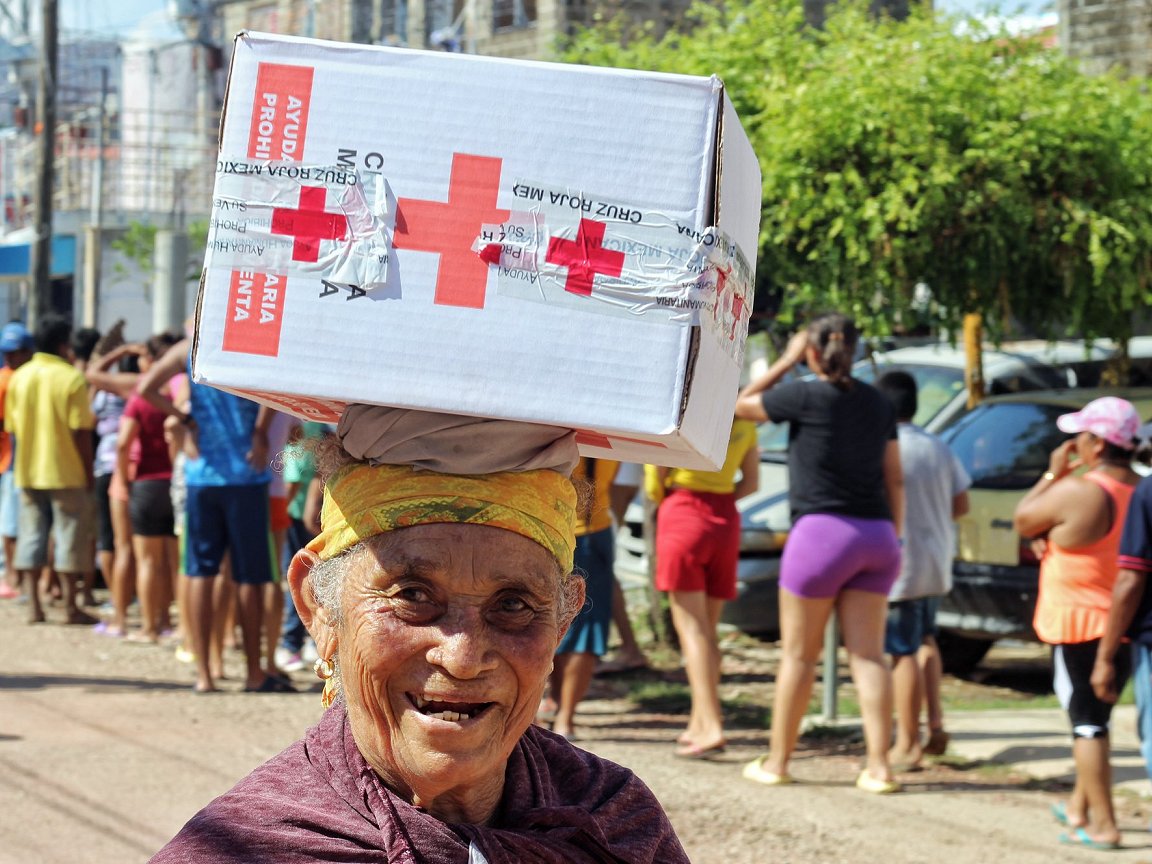
‘We have to do more and more each year … with less’

By the Climate Centre
(The release of the WMO report on Latin America and the Caribbean coincides with World Red Cross Red Crescent Day on 8 May; IFRC coverage is here.)
El Niño and climate change combined in 2023 to generate “a year of record climatic hazards” in Latin America and the Caribbean, the World Meteorological Organization said today.
Drought, heat, wildfires, extreme rainfall and a record-breaking hurricane had serious impacts on health, food, energy, and economic development, according to the WMO’s State of the Climate in Latin America and the Caribbean 2023 report.
Sea levels also continued to rise at a higher rate than the global average around much of the region’s Atlantic rim.
The report comes shortly after the 2024 IFRC pre-hurricane conference, organized by the Panama City-based Americas regional office, heard that National Societies and the humanitarian community are being asked to “do more with less”.
The mean temperature last year was the highest on record at 1.39°C above the 1961–1990 baseline, with Mexico seeing the fastest rate of warming in the region, the WMO report says.
The transition from La Niña to El Niño caused “a big swing in rainfall patterns”, with many areas switching between drought and floods.
Intense drought depletes Panama Canal
WMO Secretary-General Celeste Saulo said today: “Unfortunately, 2023 was a year of record climatic hazards in Latin America and the Caribbean … Hurricane Otis (photo) rapidly intensified before making landfall, hitting Acapulco in Mexico as a devastating Category 5 hurricane, with dozens of fatalities and several billions of dollars in damage.
“Floods caused misery in many parts of the region. Intense drought reduced the Negro River, at Manaus in Brazil’s Amazon to its lowest level in more than 120 years of observations, and severely disrupted shipping through the Panama Canal.”
While better integration of meteorological data with health surveillance reflects stronger public health strategies, a special chapter in the report says, “there is still much room for improvement in view of growing climate-related risks to health [including] heatwaves, air pollution, food insecurity and mosquito-borne diseases”.
The WMO quotes EM-DAT as reporting 67 “meteorological, hydrological and climate-related hazards in the region in 2023”, of which 77 per cent were the product of storms and floods; just over 20 billion US dollars’ worth of damage was suffered, again mainly due to storms, including US$ 12 billion linked to Hurricane Otis alone.
Nearly 1,500 people from just over 100 countries and 74 National Societies registered for the IFRC’s hybrid pre-hurricane conference late last month, meanwhile, bracing for record atmospheric and oceanic temperatures favouring greater cyclonic activity in the Atlantic.
The central theme of this year’s event – agreed by the IFRC, the Caribbean Disaster Emergency Management Agency, and the Centro de Coordinación para la Prevención de los Desastres en América Central – focused on early warning early action, followed up by early financing.
Organizers quoted Colorado State University specialists as saying the 2024 Atlantic season – which officially starts on 1 June – could see as many as 24 named storms, of which 11 would become hurricanes and five would reach major status. (Last year saw 20 named storms and seven hurricanes, three of them major.)
The numbers are getting bigger
“Our collective preparedness strategies must take into account that while there are 38 nations and overseas territories in the Americas exposed to storms and hurricanes, some are especially vulnerable,” they added.
“In Haiti, the Dominican Republic, Cuba and Venezuela, for example, we must redouble our efforts in volunteer care, logistics, security, humanitarian diplomacy, fundraising, public communication, and vulnerability and capacity assessments.
“We must do everything in our power to anticipate and reduce the impact of cyclonic activity, and to ensure that if help is needed, it reaches those who need it most in time.”
Steve McAndrew, IFRC Americas Deputy Regional Director, said in a closing address: “We have bigger numbers and bigger challenges. We have migration, we have El Niño, we have climate change, we have many issues each year. Those challenges are getting bigger, they’re increasing.
“And our member National Societies have to deal with more and more each year … it feels to me as if each year we have to do more with less.”
Thanking all the volunteers and donors who made the 2024 conference possible, he concluded: “The only real way to confront that is to work together. We have to pool our resources. We have to be efficient.”
Hurricane Otis made landfall near Acapulco on 25 October last year at peak Category 5 intensity. By 1 November, the Mexican Red Cross had distributed more than 500 tons of humanitarian aid to 165,000 families affected by the storm (pictured). Alone, Otis caused 12 billion US dollars’ worth of damage, according to the WMO’s State of the Climate in Latin America and the Caribbean 2023 report, released today. (Photo: NASA via Wikipedia)